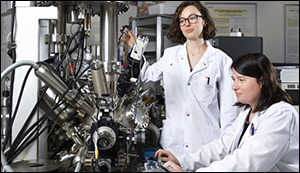Rechargeable batteries that last longer and re-charge more rapidly
11. 7. 2016 | Paul Scherrer Institute | www.psi.ch
Materials researchers at the Swiss Paul Scherrer Institute PSI in Villigen and the ETH Zurich have developed a very simple and cost-effective procedure for significantly enhancing the performance of conventional Li-ion rechargeable batteries.
Instead of inventing a new battery technology, researchers took a different approach: They checked existing components with a view to fully exploiting their potential. Simply by optimizing the graphite anode – or negative electrode - on a conventional Li-ion battery, researchers were able to boost battery performance. Under laboratory conditions, they were able to enhance storage capacity by a factor of up to 3. Owing to their complex construction, commercial batteries will not be able to fully replicate these results. But performance will definitely be enhanced, perhaps by as much as 30 – 50 percent: further experiments should yield more accurate prognoses.

The method involves coating the graphite flakes with nanoparticles of iron oxide sensitive to a magnetic field and suspending them in ethanol. The suspended and already magnetized flakes are subsequently subjected to a magnetic field of 100 millitesla—about the strength of a fridge magnet.. As a result, they are perfectly ordered, reducing the diffusion distances covered by the lithium ions to a minimum.
Read more at Paul Scherrer Institute
Image Credit: Paul Scherrer Institute
-jk-




